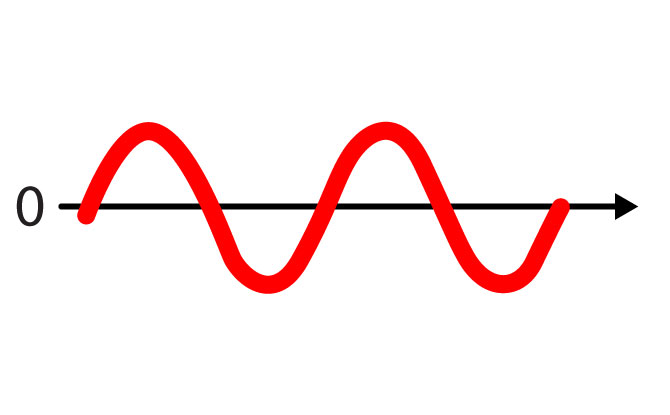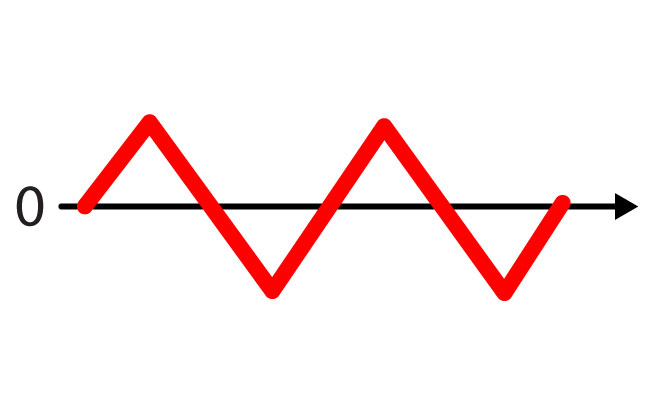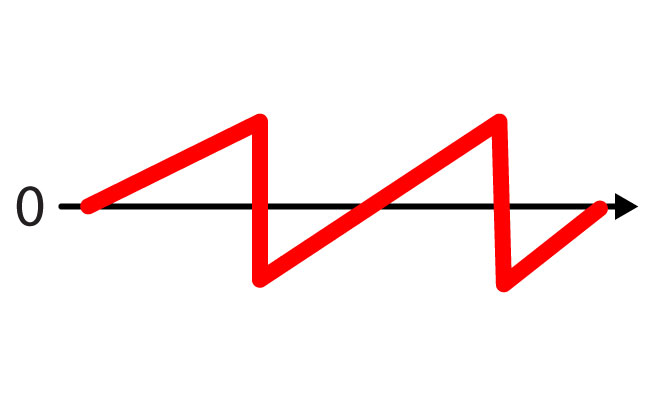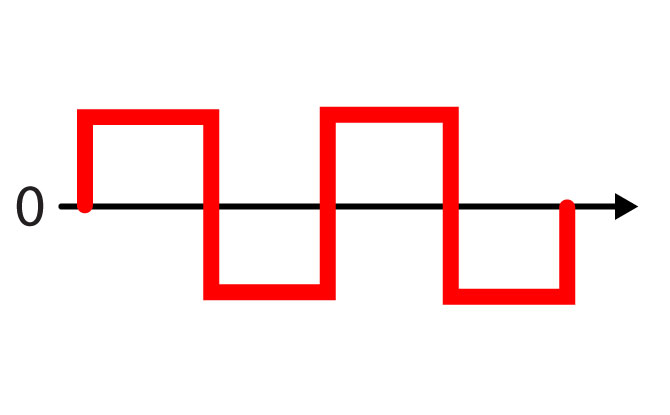When it comes to describing sounds, it is common to refer to different types of wave shapes and waveforms. These two terms are often used interchangeably and common wave shapes include sine waves, sawtooth waves, square waves and triangle waves.
The wave shape describes the physical appearance of the wave form when plotted out on a graph. Each of these have their characteristic and distinctive sound.
Wave Shapes & Waveforms
Sine Wave

(Listen at a lower volume to protect your hearing)
Let’s start with the simplest wave shape – that of the sine wave.
The sine wave is made up of a smooth curve throughout the wave cycle. The energy of the wave rises continuously till it reaches its crest before falling to its trough and then eventually returning to tge center line.
A sine wave is also known as a pure tone and it is the easiest to identify as it sounds like a flute.
In the harmonic series, the fundamental frequency, second, third, fourth, fifth harmonics and so on, are all made up of sine waves. These simple sine waves combine together with different amplitudes to create more complex waveforms like sawtooth waves, square waves and triangle waves.
Triangle Wave

(Listen at a lower volume to protect your hearing)
The triangle wave gets its name from the shape of its waveform.
Triangle waves have a brighter sound compared to sine wave. Shape-wise, it looks like an angular-version of sine wave with the amplitude of the wave rising before sharply falling. The rise and fall of the amplitude is symmetrical This results in a sound that has some of the characteristics of a sine wave but with an edgier sound.
The sound of a recorder being played breathily produces a waveform similar to a triangle wave.
Sawtooth Wave

(Listen at a lower volume to protect your hearing)
The sawtooth wave is named because it looks more jagged and is skewed to one side – just like the teeth on the blade of a saw.
This sound of a sawtooth wave is edgy, buzzy and almost distorted. This is a reflection of the richer harmonic content of this type of wave.
Examples of instruments that produce sawtooth waves are brass instruments like trumpets and stringed instruments being bowed.
When a violin is bowed, the sound is generated when the bow “catches” the string by friction, pulls it a distance before releasing it. This action takes place repeatedly as the bow is dragged across the string, giving the violin a slightly buzzing sound.
Square Wave

(Listen at a lower volume to protect your hearing)
A square wave is created by combining the odd harmonics, in other words, the 1st, 3rd, 5th, 7th harmonics and so on, in a specific proportion. This creates a shape that resembles a square. It has quite a harsh and edgy tone.
The sound of a square wave is similar to that of a clarinet. It also sounds like 8-bit computer music from the past.

